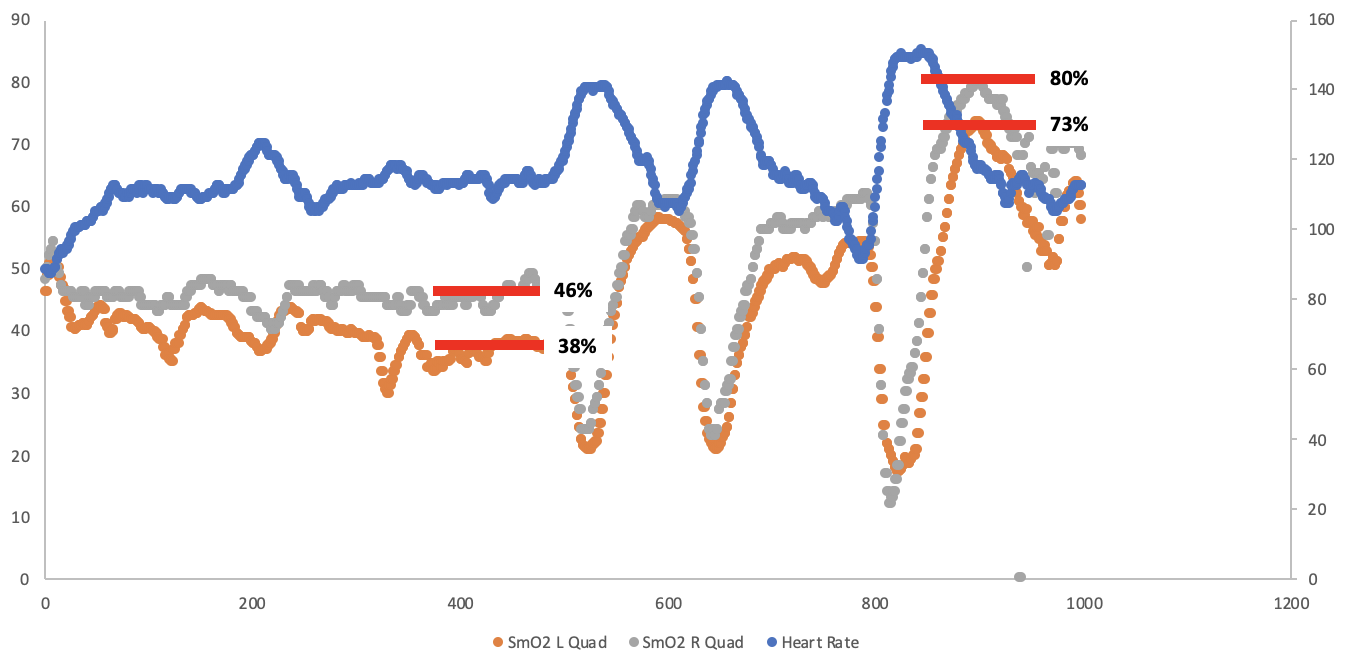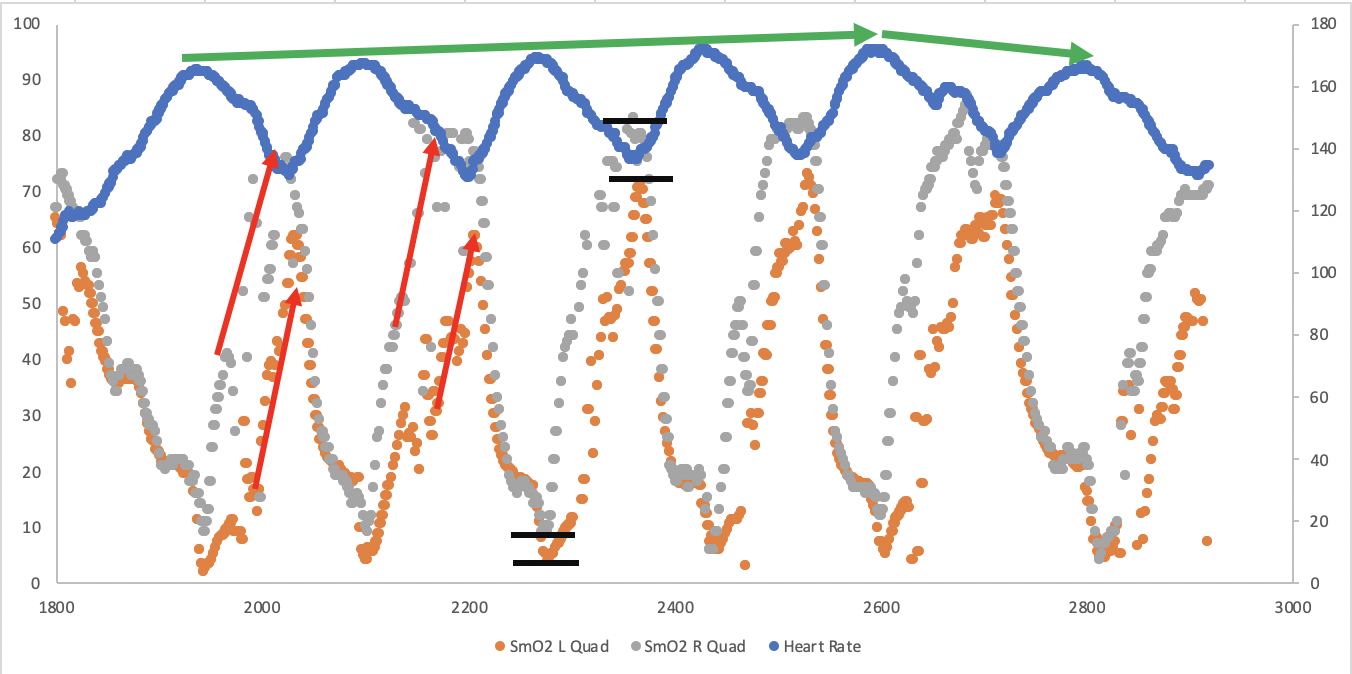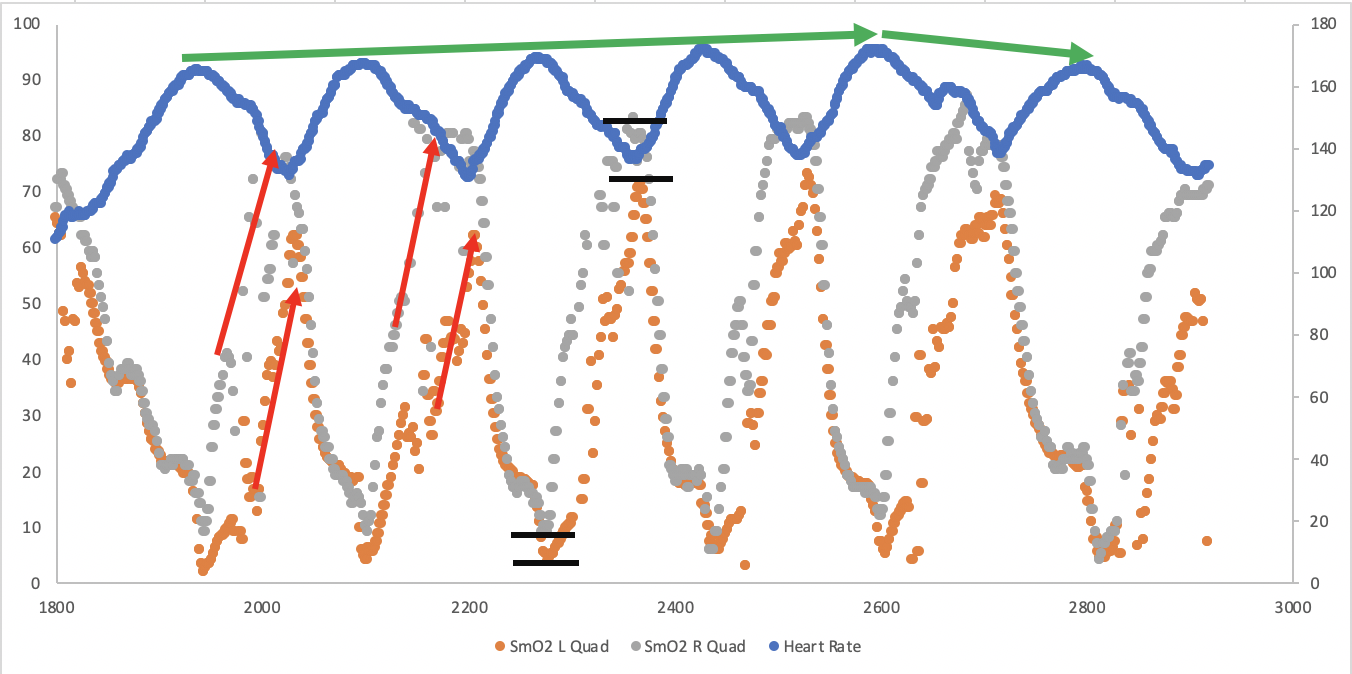Further Identification of Unilateral Imbalances Using Moxy
In the last blog post I detailed discrepancies in desaturation patterns in the right and left vastus lateralis during a mountain biking workout. In this workout I saw a slowed warm-up response in the left leg. Further in the workout the right leg wasn’t desaturating as much as the left. In order to further test if these discrepancies exhibited, are sport specific, I wore Moxy’s on both VL’s, again, and did an interval workout on the stair climber.
Workout Protocol:
15 minute warm – 3x45s surges - Goal: Push SmO2 as high as possible
5x60s, 1x1.5min – as hard as possible, each set followed by 30-45s wall sit - Objective: Continue intervals until desaturation or resaturation can no longer be reached, followed by wall sit until low SmO2 can no longer be maintained
Recover as long as it takes to fully resaturate
Detailed in figure 1, After a 15 minute warm-up consisting of easy cycling with 30-60s hard efforts dispersed throughout, SmO2 reached 80% in the right and 73% in the left. During the beginning of the warm-up there was about a 10% difference in the left and right leg. The first hard effort led to the same SmO2 response in both legs. After the second hard effort the left leg didn’t recover to the same level as the right (50 and 57%, respectively). During the final acceleration the left leg didn’t desaturate to the same level as the right (16 and 12%).

Next, I completed the stair workout, with the goal of desaturating as low as possible, then holding a wall sit, to increase metabolites and decrease SmO2 further, until SmO2 began to rise in both legs. The reason for targeting the point where SmO2 began to rise is because this is an indication of either a change in preferential blood flow or recruitment of the muscle or both. I then waited until SmO2 resaturated fully before beginning the next interval. The heart rate and SmO2 response is shown in figure 2. The first thing I want to highlight is an increase in heart rate on each subsequent interval except the last. This was due to increasing intensities, with the last interval capped at a target race pace. During each interval SmO2 desaturation kinetics seem very similar between each leg but the left leg consistently starts from a lower SmO2 and reaches a lower SmO2 during the workout than the right leg ~4% and 9%. During rest the left leg seems to lag behind the right in terms of how quickly SmO2 returns to baseline. Something that I noticed during the wall sit is that the left leg consistently stayed low, while the right leg’s SmO2 would drift upwards sometimes reaching 35% before I finished the wall sit. Because the SmO2 values were starting in different places this could provide an explanation for the ‘lag’ in SmO2 recovery in the left leg. Throughout each rest period, the left leg consistently reached lower peak values (73%) than the right leg (83%) again highlighting the differences in leg SmO2 patterns.

So what?
This interval workout shows/confirms, in my case, that leg oxygenation discrepancies seem to persist across different modalities of training. For me, it seems that the left leg is consistently working harder than the right leg, which could be due to strength or muscle mass differences between the legs, or differences in recruitment patterns. I have suffered many injuries so it’s not completely outlandish to surmise that these injuries could have led to changes in recruitment patterns or vice versa. The next step is to analyze muscle mass through DXA or bioimpedance (InBody), and/or identify potential limiters in each leg that could be contributing to these differential oxygen kinetic patterns.

